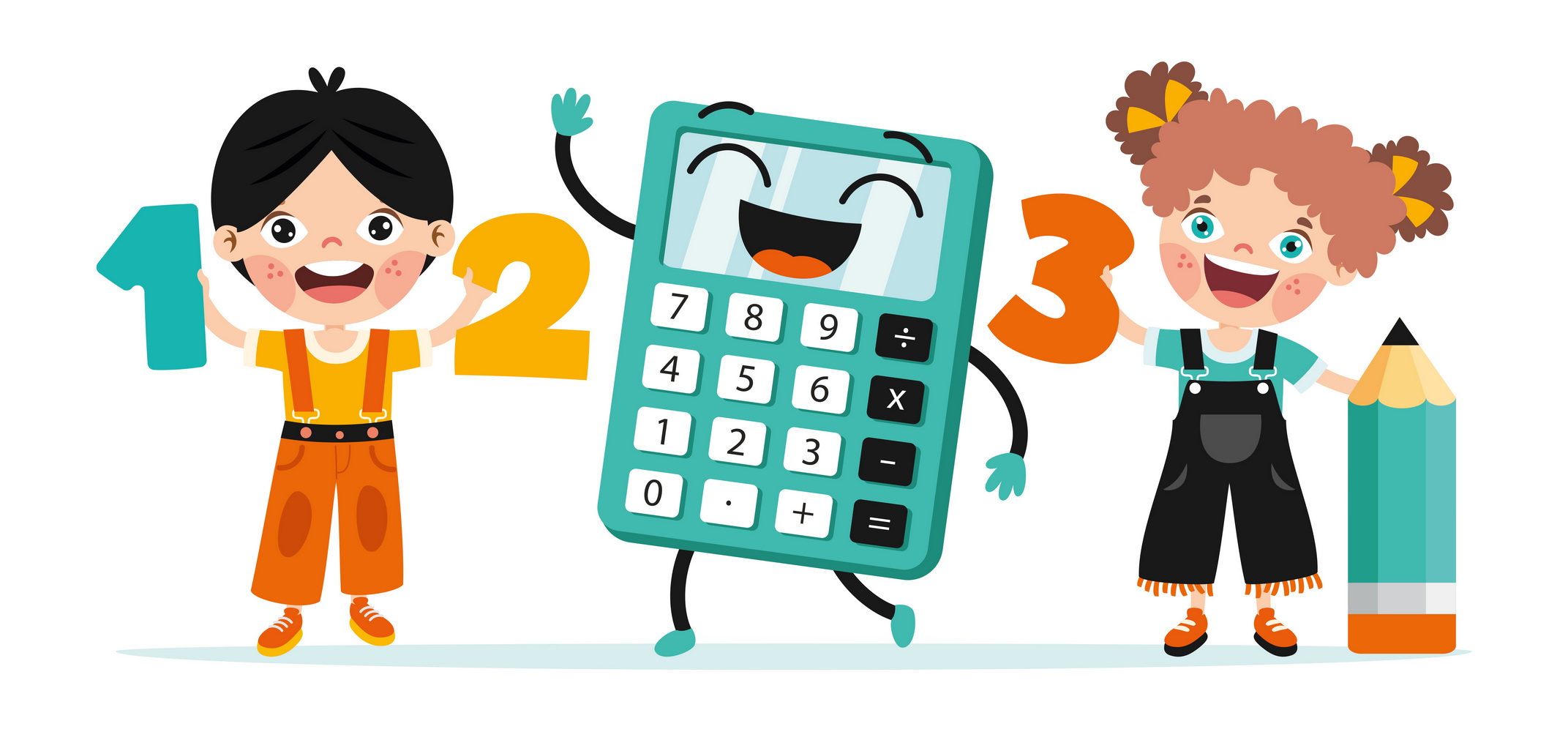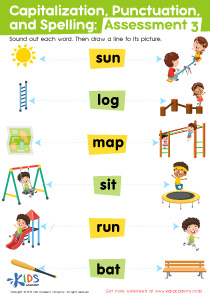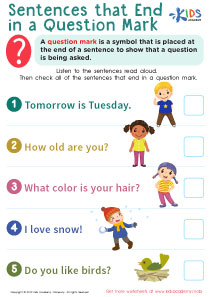Sentence structure Writing Worksheets for Ages 3-7
7 filtered results
-
From - To
Boost your child's writing skills with our Sentence Structure Writing Worksheets for Ages 3-7. Designed to foster creativity and develop essential language abilities, these age-appropriate worksheets help young learners understand basic sentence formation. Engaging and fun, each worksheet encourages kids to practice simple sentence writing, introducing them to subjects, verbs, and objects. Perfect for early grade students, these resources are excellent for reinforcing classroom learning or homeschooling. Equip your little one with the foundation for effective communication and early literacy success, while making learning enjoyable and rewarding. Start your child's writing journey today!
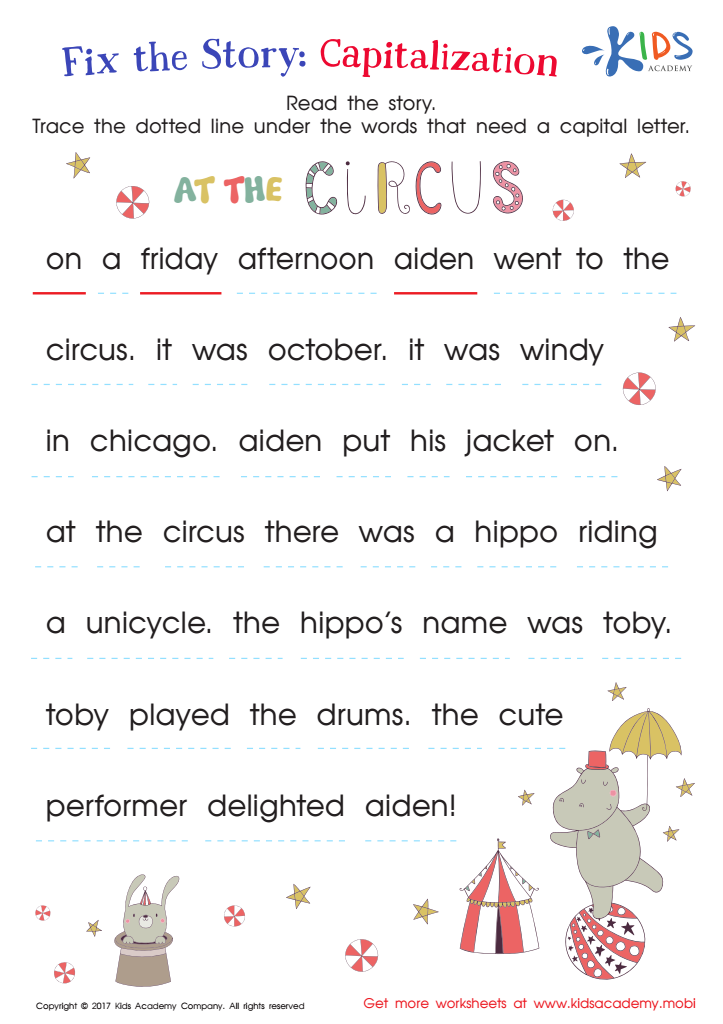

Capitalization: Fix the Story Worksheet
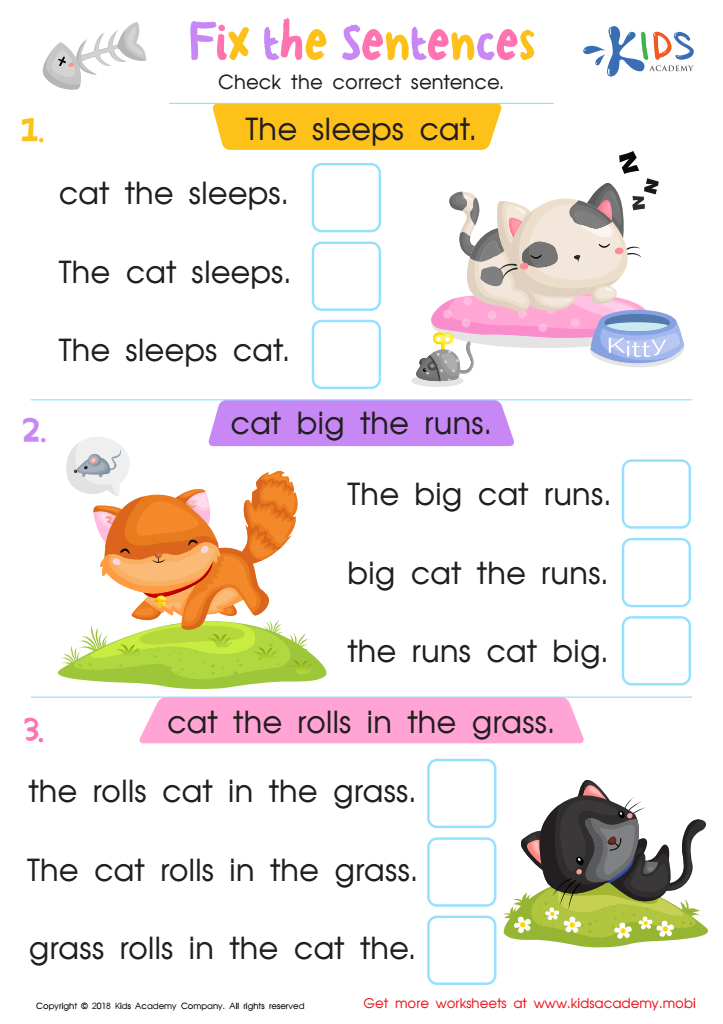

Fix the Sentences Worksheet
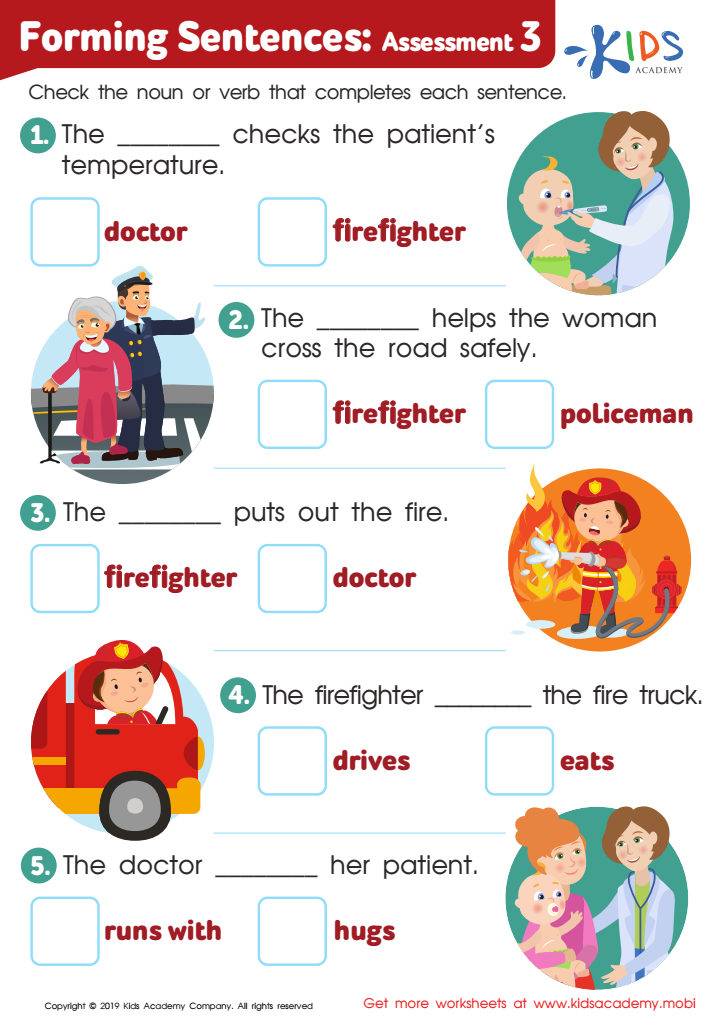

Forming Sentences: Assessment 3 Worksheet


Capitalization. Punctuation. Spelling. Assessment 3 Worksheet
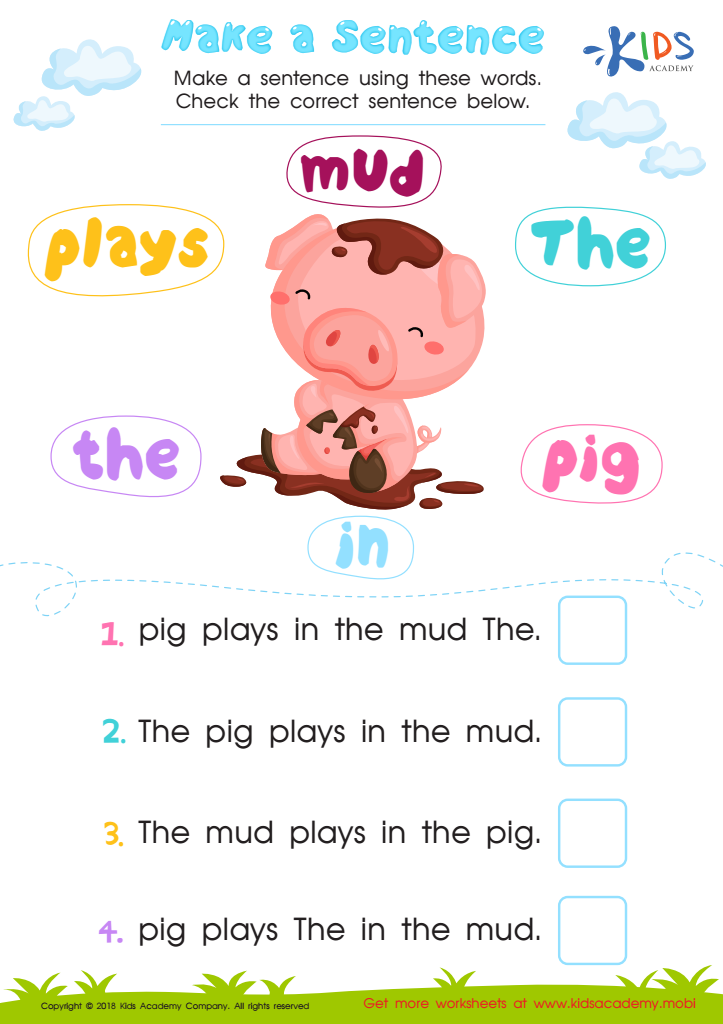

Assessment: Make a Sentence Worksheet
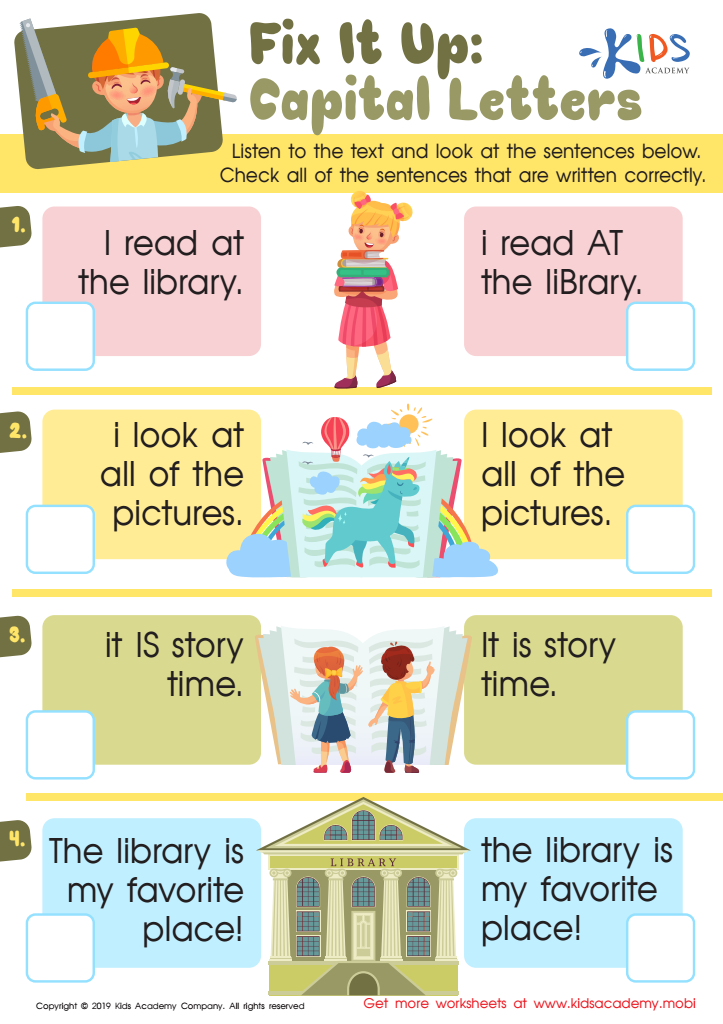

Fix Capital Letters Worksheet
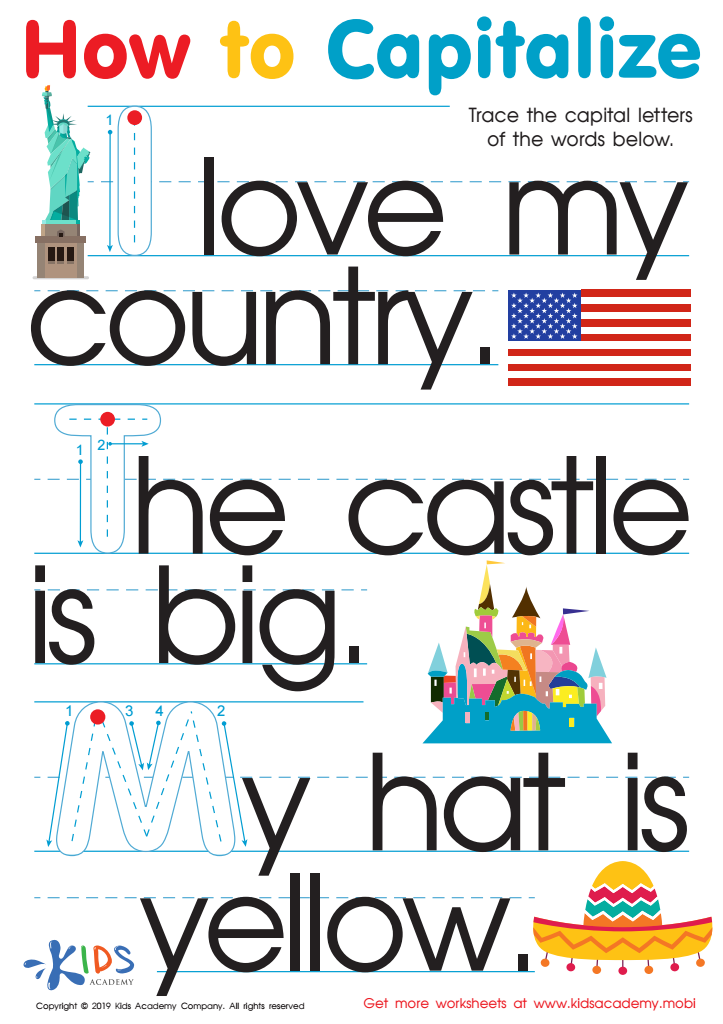

How to Capitalize Worksheet
Caring about sentence structure writing for children aged 3-7 is crucial for several reasons. First, this age range encompasses a critical formative period for language development. Learning the basics of sentence structure—such as subject, verb, and object—lays the foundation for effective communication. Proper sentence construction allows children to express their thoughts, needs, and emotions clearly, reducing misunderstandings.
Second, early mastery of sentence structure enhances cognitive development. Understanding how words fit together cultivates logical thinking and improves problem-solving abilities. It also aids memory retention, as structured information is easier to remember.
Third, writing with correct sentence structure helps in various aspects of academic achievement. Reading comprehension skills improve as children recognize how sentences convey meaning. This familiarity breeds confidence, encouraging more focused and engaged learning across subjects.
Finally, early writing skills foster social connections. Children who can effectively articulate their ideas are more likely to engage in meaningful conversations and participate in group activities, which supports emotional and social development.
In summary, focusing on sentence structure writing from an early age sets children on a path for academic success, cognitive growth, clear communication, and strong social interactions. Teachers and parents should prioritize this aspect of language arts to equip children with essential lifelong skills.
 Assign to My Students
Assign to My Students



